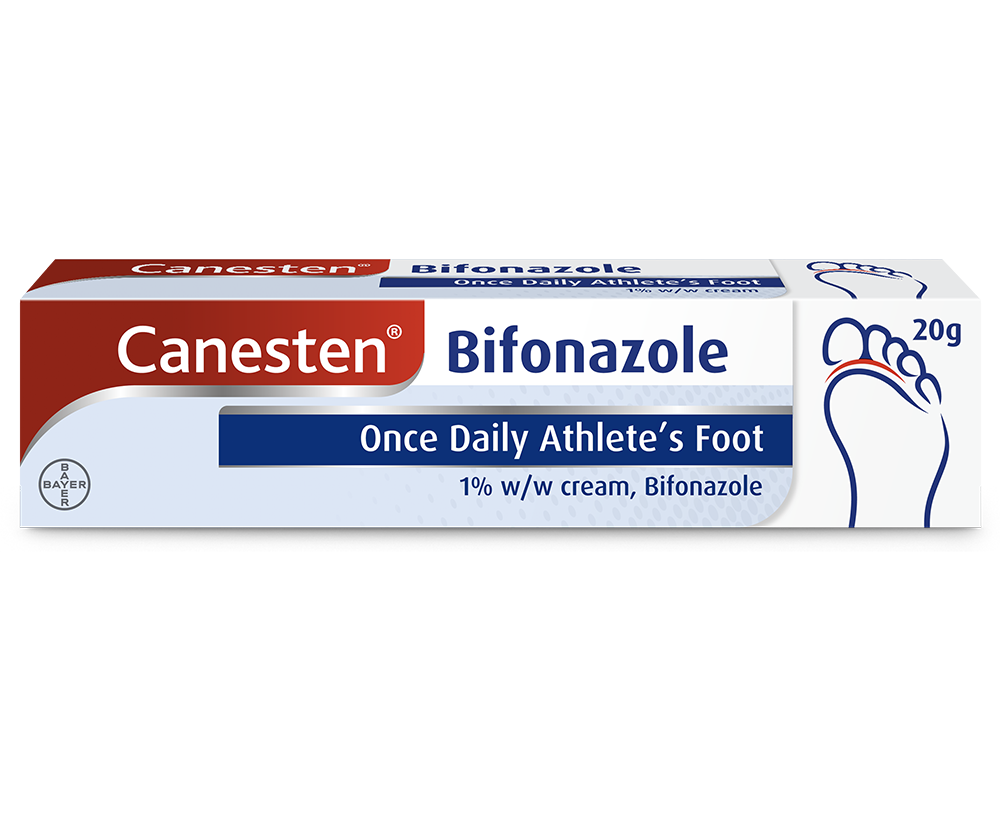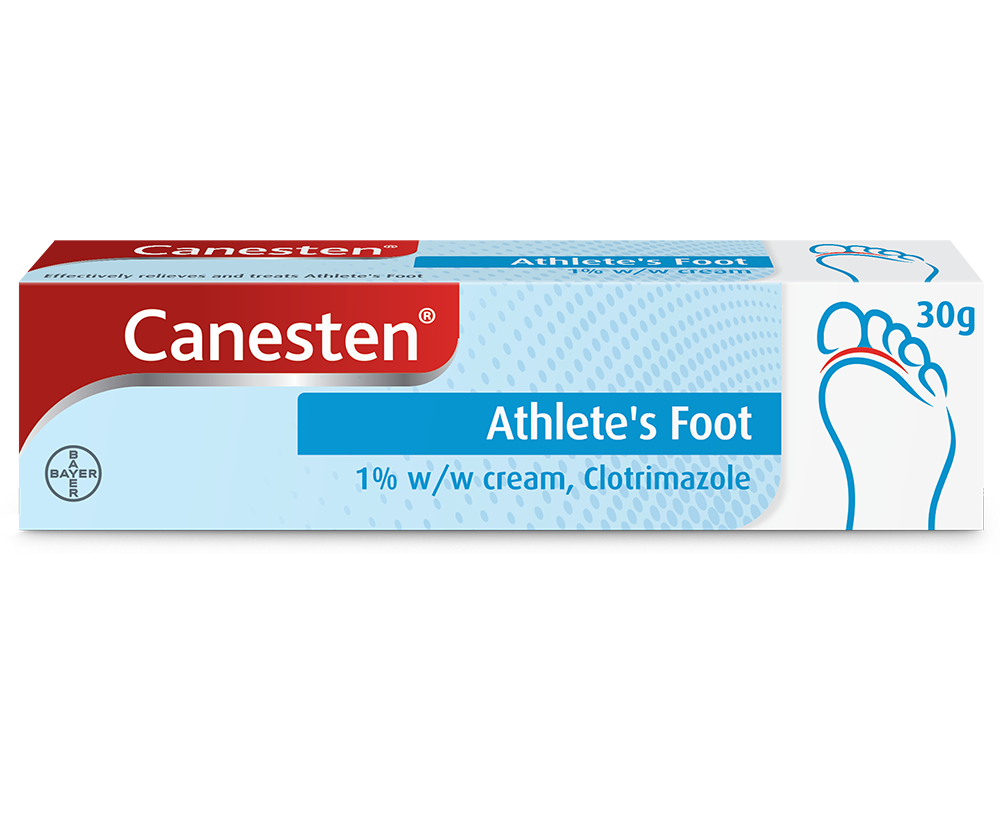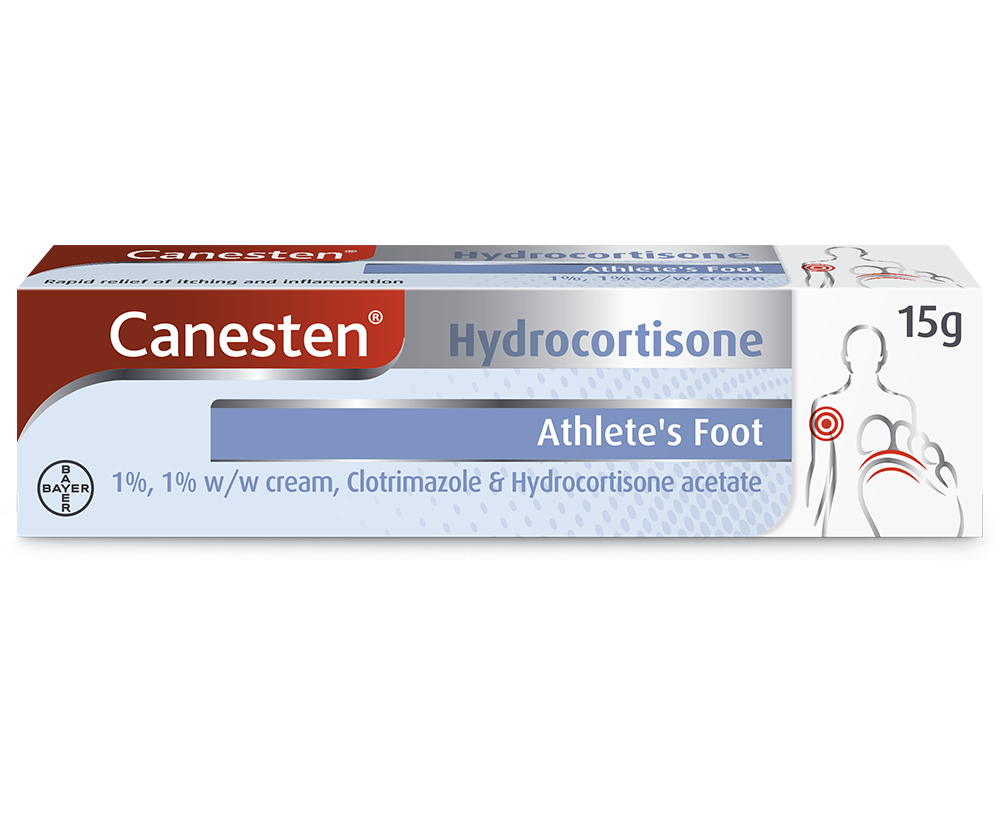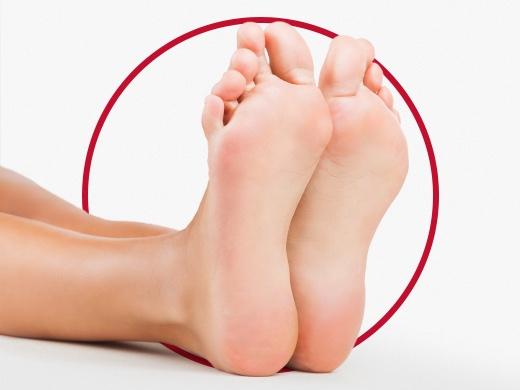When drying your feet, pay special attention to the areas between your toes.
Athlete's foot
Athlete’s foot (tinea pedis) is a fungal infection that affects the skin on your feet. This foot fungus thrives in warm and moist environments and commonly occurs in people whose feet have become very sweaty while confined within tight-fitting shoes or trainers. Athlete’s foot is highly contagious and is often spread in public changing rooms, showers and swimming pools. An athlete’s foot infection usually occurs between your toes, but it can also affect the soles and sides of your feet.

Athlete’s foot symptoms
You might have athlete’s foot if you notice:
- Burning or itchy feet and toes
- Scaly, very dry, cracked or peeling feet
- A foot rash on your feet or between your toes
- Softening or whitening of the skin between your toes
- Cracked skin between your toes or on the soles or heels
- Smelly feet
You can also experience more severe symptoms:
- Blisters
- Inflammation of cracked skin
See your doctor if:
- Symptoms do not improve or worsen after using an athlete’s foot treatment
- Your foot is red, hot and painful – this could be a more serious infection
- You have diabetes – foot problems can be more serious if you have diabetes
- You are pregnant or elderly. Anti-fungal medications might not be suitable for you and your doctor may recommend an alternative treatment
- You have a weakened immune system – for example, you have had an organ transplant or are having chemotherapy
Understanding athlete’s foot
Your exact athlete’s foot symptoms will depend on the type of athlete’s foot you have. Two common forms of athlete’s foot are:
Interdigital Athlete’s Foot
This form of athlete’s foot is the most common and occurs in the spaces between your toes. The third and fourth toe web spaces are most commonly affected and show symptoms such as red, scaly, flaky patches between your toes and cracking or splitting of the skin between your toes. If your feet are moist this may appear as softening, whitening and splitting of the skin between your toes. Interdigital tinea pedis is often accompanied by symptoms of burning or itchy feet and toes.
Moccasin Athlete’s Foot
Moccasin infections affect the soles, heels and sides of the foot where the skin may become dry, scaly and thickened. As the moccasin variety of athlete’s foot causes dryness and scaling of the feet it can be easy to mistake it for eczema or dry skin.
What causes athlete’s foot
Athlete's foot is caused by a group of fungi called dermatophytes which infect the uppermost layers of the skin. The fungus is highly contagious and can be caught from other people with the infection or from contaminated surfaces or objects. It is commonly caught by walking barefoot in public places such as shower room floors, changing rooms and swimming pool floors. You can also get athlete’s foot by sharing contaminated items such as socks, shoes or towels.
Who is at risk of getting athlete’s foot?
Athlete’s foot is very common and up to 7 in 10 people may suffer from it at some point in their lives. It got it's name because it affects people whose feet tend to be damp and sweaty, which is often the case with athletes. However, anyone can get this infection. You are more likely to get it if:
- The skin on your feet is damaged.
- You walk barefoot in common areas, like gyms, swimming pools, communal showers and changing rooms.
- You frequently have sweaty feet, or you suffer from hyperhidrosis (excessive sweating). This foot fungus thrives in warm, moist and sweaty conditions.
- You wear tight, closed-toe shoes that make your feet hot and sweaty.
- You have a weakened immune system.

Athlete's foot treatment
Canesten athlete’s foot treatments
Canesten offers a wide range of athlete’s foot treatments which effectively treat your fungal infection. They are easy to apply and penetrate your skin to stop fungal growth, destroy the fungi and relieve your athlete’s foot symptoms such as itchy feet and peeling feet. The treatments can be bought in your local pharmacy, high street shops, supermarkets, or online.
- Canesten® Bifonazole Once Daily Athlete’s Foot 1% w/w Cream – A convenient treatment that penetrates deep into your skin, so the cream only needs to be applied once daily to treat the infection.
- Canesten® Athlete’s Foot 1% w/w Cream – This cream is both anti-fungal and anti-bacterial. The active ingredient clotrimazole is anti-fungal to treat the fungi that causes your athlete’s foot as well as being anti-bacterial to help get rid of the bacteria that can cause your feet to smell.
- Canesten® Hydrocortisone Athlete’s Foot 1% w/w Cream – This is the only treatment you can buy formulated with a combination of clotrimazole and hydrocortisone acetate. The active anti-fungal ingredient clotrimazole effectively treats your athlete’s foot infection, while hydrocortisone acetate treats the inflammation.
Remember! Even if your athlete’s foot infection seems like it’s clearing up, you must complete the full course of athlete’s foot treatment to ensure the infection is treated.




